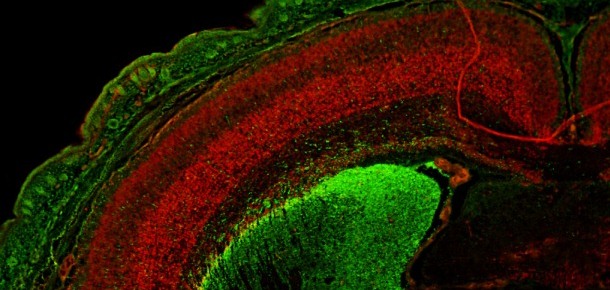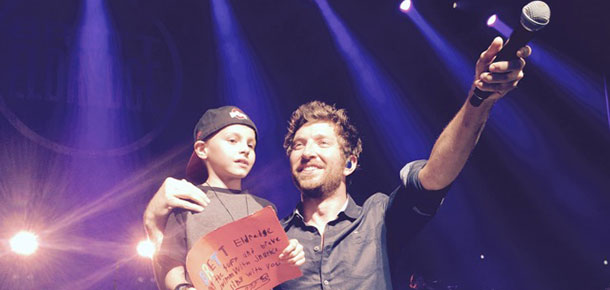Much of what makes us human comes from a part of the brain called the telencephalon, also known as the forebrain. This region controls cognition, emotion and how we move.
Inside the forebrain is an area called the amygdala, which plays a major role in controlling emotion. Cincinnati Children’s researchers Kenneth Campbell, PhD and Ronald Waclaw, MS, PhD, created this image while mapping out the brain circuitry involved in fear and anxiety.
This magnified, colorized image comes from the tiny brain of a developing mouse. The sample was stained with antibodies that bind to specific structures within the brain, which then glow in distinct colors when viewed with a fluorescence microscope. Red marks the cerebral cortex and other structures along the top (dorsal) layer of the brain while green illuminates deeper (ventral) structures.
By comparing brain images of genetically modified mice to those of normal mice, scientists can learn more about the amygdala and ultimately understand how the fear circuit forms during early brain development.
Such understanding could shed light on many conditions, and potentially lead to improved treatments. Unhealthy fear response plays a role in post-traumatic stress syndrome, obsessive-compulsive disorder (OCD) and Tourette syndrome.
Read more about our brain development research at the Division of Developmental Biology.






Wow! Just wow! I am an aunt of a tiny EB patient just admitted this week. In researching and learning about this hospital I found the CCH blog. I came across a blog about the brain as I am always reading up on; I have 2 children with neuro disorders (Epilepsy and TS). I found this particular blog very informative as questions that I have asked our Atlanta Dr.’s have not been answered, however from this blog I have answers! I will now report my finding to my son’s TS specialist. Thank you!